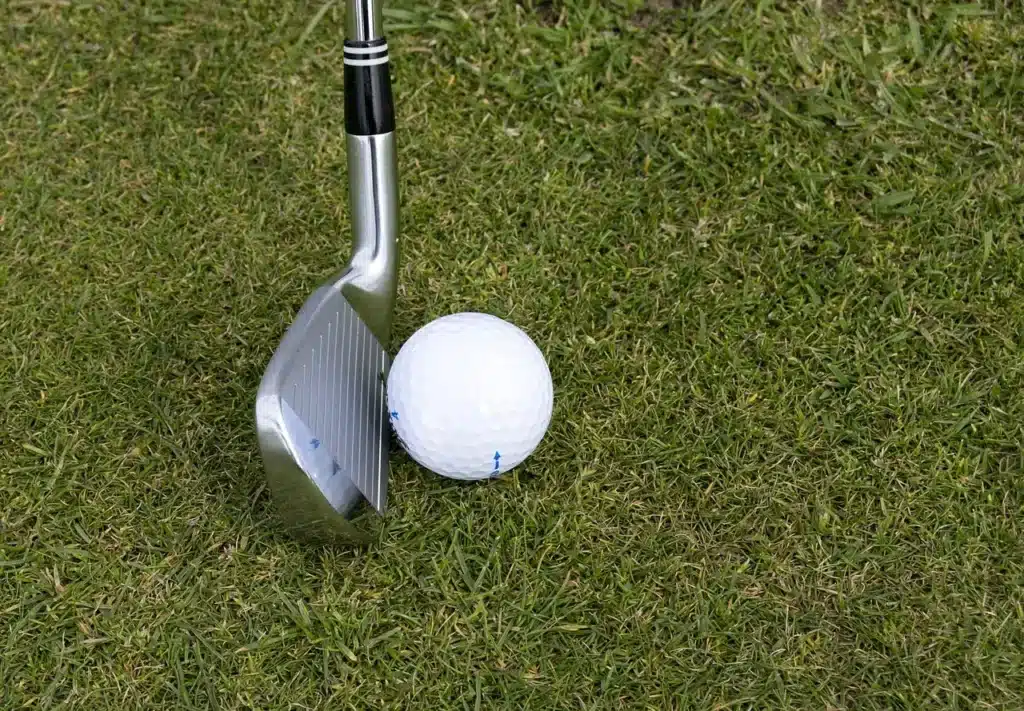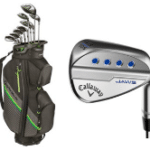“Do Golf Wedges Need to Be Fitted?” It’s a question we get asked a lot. Many golfers are curious about how a wedge fitting works. If you’re thinking about taking your game to the next level, one of the best things you can do is take your clubs to a local golf shop and get them fitted.
In this article, We will explore the importance of wedge fitting and why it matters for your golf game. The differences between wedges and irons, and what factors to consider when getting your wedges fitted. After reading this You’ll benefit from having every club in your bag custom fit, but in this go-around.
Wedge fitting is not easy, but not impossible:
As I said at the beginning, wedge fitting is complicated and not particularly accessible, which is probably why so few golfers have been fitted for their wedges. While it’s never going to be uncomplicated, we hope this guide gives you a better idea of what to look for in your next wedge and how you can find it if a proper fitting isn’t in the cards.
Let us know how it worked out.
Do Golf Wedges Need to Be Fitted?
Golf wedges can benefit from being properly fitted to a golfer’s individual specifications. Just like with other golf clubs, such as drivers and irons, getting the right fit for your wedges can help improve your performance and overall experience on the golf course. Here are some reasons why getting fitted for golf wedges can be important:
Length and Lie Angle:
Wedges come in various lengths and lie angles. The right length ensures that you’re comfortable and can make consistent swings, while the correct lie angle helps with ball flight and shot accuracy. A fitting can determine the optimal length and lie angle for your wedges.
Bounce Angle:
Wedges have unlike bounce angles on the sole, which can affect how they interact with the turf and sand. Getting the right bounce angle based on your swing style and the course conditions you typically encounter can make a significant difference in your short game.
Grind Options:
Some wedge models offer different grind options on the sole, which can influence how the club interacts with the turf. A fitting can help you choose the grind that suits your playing style and the type of shots you like to hit.
Shaft Selection:
The shaft in your wedge can affect feel, control, and performance. A fitting can help you select the right shaft material, flex, and weight to match your swing.
Grip Size and Type:
The size and type of grip can also have an impact on your wedge play. A fitting can help you choose the suitable grip size and material for your comfort and control.
Distance Gapping:
Wedge fitting can help you establish proper distance gaps between your wedges and the rest of your set, ensuring that you have the right tools for various shot distances.
Personal Preferences:
Golf wedge fitting takes into account your personal favorites, such as the look and feel of the clubhead, to ensure that you’re confident and comfortable with your wedge choices.
How To Fit Golf Wedge?
6 things to consider before going through a wedge fitting.It’ll give them a better idea of what you’re looking for as you begin the process.
1: Determine the golfer’s requirements.
Gathering information about the golfer’s specifications is the first stage in fitting golf wedges. Height, hand size, swing speed, attack angle, and desired shot trajectory are often included.
This information is used to establish the correct wedge loft, lie angle, shaft length, and grip size.
2: Examine the swing characteristics of the golfer
A launch monitor or other equipment may be used by a professional club fitter to examine the golfer’s swing characteristics, such as swing speed, ball flight, and impact pattern on the clubface.
This information can be used to identify the ideal wedge parameters, such as loft and grind, for the golfer’s swing.
3: Examine variety of wedge possibilities
The club fitter may recommend several wedge options based on the golfer’s specifications and swing characteristics.
This may entail testing different loft, lie angle, and grind choices to evaluate which ones work best for the golfer’s swing and desired shot shape.
4: Performance should be reviewed.
The golfer and the club fitter will evaluate the wedges’ performance during the fitting process, considering aspects like ball trajectory, distance, precision, and consistency. This assessment helps identify the wedges that deliver the best results for the golfer.
5: Specifications should be fine-tuned.
The club fitter may make adjustments to the wedge characteristics, such as loft, lie angle, or grind, based on the performance input to fine-tune the performance and ensure the wedges are optimized for the golfer’s swing.
6: Finalize and order custom wedges
After establishing the ideal wedge specifications, the golfer can proceed to purchase custom wedges tailored to these recommendations. This can be done through the club fitter or a trusted golf club manufacturer. It’s essential to emphasize that the process of fitting golf wedges is a specialized one, necessitating the skills of a professional club fitter.
Would My Wedges Be Fitted the Same as My Irons?
When fitting wedges, there are certain similarities to the fitting process for irons, but there are also some key differences to consider due to the unique characteristics and intended use of wedges. Here are some points to keep in mind:
Length:
Wedges are typically shorter in length compared to irons. While the length of your irons is crucial for achieving consistent distance and accuracy, the length of your wedges can vary depending on personal preference and the type of shots you want to play. Some golfers prefer shorter wedges for more control, while others may opt for a slightly longer shaft for added versatility.
Loft:
The loft of your wedges should be chosen based on the specific yardages and shot types you want to cover. While iron lofts are standardized to some extent, wedge lofts can vary widely between different models and brands. It’s essential to have the right loft gaps between your wedges to ensure you have appropriate coverage for various distances around the green.
Lie Angle:
Lie angle is crucial for both irons and wedges, as it affects the direction the ball travels. Ensuring the correct lie angle for your wedges is essential for accuracy, especially on short approach shots and pitches. It’s recommended to get your lie angle properly fitted for your wedges, just as you would for your irons.
Shaft:
The choice of shaft material and flex can impact the feel and control of your wedges. While your wedge shafts may have similarities to your iron shafts, some golfers prefer slightly different characteristics for their wedges, such as a softer flex or a different material.
Grind and Bounce:
Wedges often come with different sole grinds and bounce angles to suit different turf conditions and playing styles. These options can significantly affect how the club interacts with the ground and the ball. Fitting the right grind and bounce for your wedges based on your swing and course conditions is essential.
Grip:
Just like with irons, choosing the right grip size and style for your wedges is important for control and feel. Some golfers may prefer a different grip on their wedges compared to their irons to enhance their short-game touch.
How Much Is It to Get Fitted for Wedges?
I have always been fine with buying standard-length clubs off the rack, and I believe the majority of other people do the same. What started me thinking about it more was when I read an article (can’t remember who wrote it) that basically suggested your clubs are probably too long. It stated that most people would benefit from shortening their clubs by 1-2 inches.
I began to think about it more and became more interested in other people’s clubs. Even with longer clubs, they always appeared to be standing fully over the ball on television. Most folks on my local links appear awkward and unathletic.
Can I test my wedges outside?
yes, you can. The GPC incorporates wedge fittings into our outdoor short course, known as GPC National, allowing you to assess the performance of wedges under various conditions. utilizing the short course for custom-fitted golf clubs is essential for evaluating how they perform in situations beyond your control, such as uneven lines and windy conditions, mimicking the challenges faced during an actual round of golf. with a total of eleven distinct greens on the course, you have the opportunity to test wedges in a wide range of scenarios.
Final Thoughts on Do Golf Wedges Need to Be Fitted?
Personalized fit Custom fit wedges are properly tailored for every style of player and any type of situation you might experience on the golf course. Investing in custom-fitted golf wedges can meaningfully enhance your game. Tailored wedges offer improved performance, and consistency, and bolster confidence in your short game.







